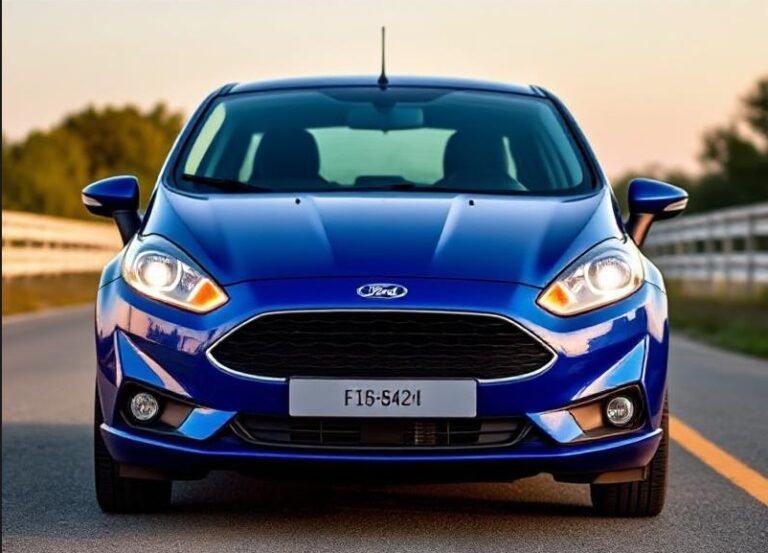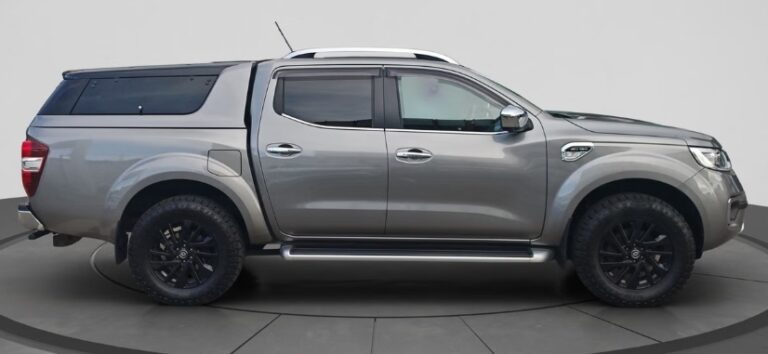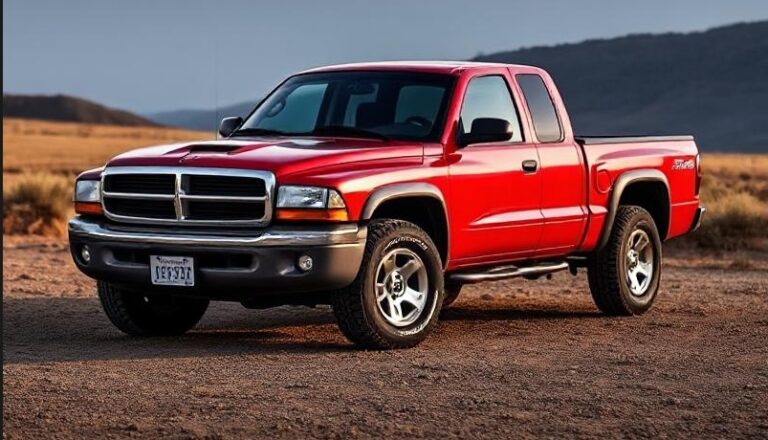A Short-Lived Legacy: The Evolution of the Dodge Rampage
The world of automotive history is filled with intriguing experiments, fleeting trends, and vehicles that, despite their short production runs, left a lasting impression. One such example is the Dodge Rampage, a compact pickup truck that dared to challenge the established conventions of its time. Produced for a mere three years, from 1982 to 1984, the Rampage offered a unique blend of practicality, affordability, and a touch of stylistic flair. This article delves into the brief but fascinating evolution of the Dodge Rampage, exploring its origins, design, models, trim levels, and its ultimate demise.
The Context: A Shifting Automotive Landscape
The late 1970s and early 1980s were a period of significant transformation in the American automotive industry. The energy crisis of the 1970s had forced manufacturers to prioritize fuel efficiency, leading to a downsizing trend across various vehicle segments. Smaller, more economical cars and trucks were becoming increasingly popular. This environment created an opening for vehicles that offered a balance between utility and cost-effectiveness.
Chrysler Corporation, facing its own financial struggles, was particularly keen on developing vehicles that would capture a share of this emerging market. The company was also looking to leverage its existing platforms and components to minimize development costs. This strategy, often referred to as “badge engineering,” was a common practice at the time, allowing automakers to produce multiple vehicles with shared platforms, body styles, and mechanical components.
The Genesis: Inspiration from the Ranchero and El Camino
The Dodge Rampage was conceived as a response to the success of car-based pickup trucks like the Ford Ranchero and the Chevrolet El Camino. These vehicles, popular since their introductions in the 1950s, offered a unique combination of passenger car comfort and the open cargo bed functionality of a pickup. They were particularly appealing to buyers who didn’t require the full-sized capabilities of a traditional truck but still needed occasional cargo-hauling capacity.
Chrysler, recognizing the potential of this market segment, decided to develop its own entry. The decision to base the Rampage on the front-wheel-drive (FWD) L-body platform, which also underpinned the Dodge Omni and Plymouth Horizon, was a crucial one. This platform offered a compact footprint, good fuel economy, and cost-effectiveness, all vital ingredients for a successful vehicle in the evolving market.
1982: The Debut and Initial Offerings
The Dodge Rampage made its debut in the 1982 model year, marking the official entry of Chrysler into the car-based pickup segment. The Rampage immediately stood out from its rivals with its distinctive styling. While sharing the basic L-body structure with its Omni and Horizon siblings, the Rampage featured a unique front fascia with a prominent grille, rectangular headlights, and a bold “DODGE” nameplate. The rear of the vehicle was characterized by its pickup bed, which was integrated seamlessly with the cab.
Initially, the Rampage was offered with a single engine option: a 2.2-liter inline-four-cylinder engine that produced 96 horsepower and 119 lb-ft of torque. This engine, while not particularly powerful, provided acceptable performance and excellent fuel economy, a crucial selling point in the fuel-conscious early 1980s. The transmission options included a standard four-speed manual and an optional three-speed automatic.
The Rampage was offered in a single trim level in its inaugural year, but it was reasonably well-equipped. Standard features included:
- Vinyl Bucket Seats: Offering a durable and practical seating solution.
- AM Radio: The basic audio entertainment system of the time.
- Tinted Glass: Providing privacy and reducing heat buildup.
- Power Brakes: Improving braking performance.
- Manual Steering: The standard steering system, with power steering available as an option.
Optional features included air conditioning, power steering, an upgraded AM/FM stereo, a sliding rear window, and a cargo bed tonneau cover. The focus was on providing a functional and affordable vehicle, emphasizing practicality over luxury.
1983: Refinements and Expansion
For the 1983 model year, the Dodge Rampage received some minor refinements and a notable expansion of its engine lineup. The exterior styling remained largely unchanged, but there were subtle updates to the interior, including revised seat fabrics and trim.
The major change came under the hood. While the 2.2-liter engine remained available, Chrysler introduced a new engine option: a 2.6-liter inline-four-cylinder engine produced by Mitsubishi, which offered 102 horsepower and 140 lb-ft of torque. This engine provided a noticeable boost in performance, making the Rampage more appealing to buyers seeking a bit more power. The 2.6-liter engine was paired exclusively with a three-speed automatic transmission.
The trim levels also saw a slight expansion, although the core offering remained consistent. Buyers could now choose from:
- Base Model: Essentially the same as the 1982 model, offering the core features and a reasonable level of equipment.
- Sport Package (Optional): This package added sporty touches such as a blacked-out grille, black or body-colored bumpers, performance tires, and sport suspension.
This Sport Package catered to buyers who wanted a more aggressive look and a slightly enhanced driving experience. The list of optional equipment also expanded, with features like cruise control becoming available.
1984: The Final Year and the End of the Line
The 1984 model year marked the final production run for the Dodge Rampage. While the vehicle remained essentially the same as the 1983 model, there were no significant changes to the styling, engine options, or trim levels.
The Rampage continued to be offered with the 2.2-liter and 2.6-liter engines, the four-speed manual and three-speed automatic transmissions, and the base and Sport Package trim options. Optional features remained largely consistent, including air conditioning, power steering, and upgraded audio systems.
The decision to discontinue the Rampage after just two years of production was based on several factors. Sales never met Chrysler’s initial expectations. The Rampage faced stiff competition from other compact trucks, particularly those from Japanese manufacturers, who were gaining increasing market share with their fuel-efficient and reliable offerings. The Rampage’s limited cargo capacity compared to its rivals, along with its somewhat utilitarian interior, also likely contributed to its relatively low sales figures.
Furthermore, the L-body platform on which the Rampage was built was already nearing the end of its lifespan, and Chrysler was focusing its resources on developing new vehicle platforms and models. Given these challenges, Chrysler decided to discontinue the Rampage, ending its brief but memorable run in the automotive landscape.
The Legacy: A Cult Following and Enduring Appeal
Despite its short production run, the Dodge Rampage has developed a cult following among car enthusiasts. Its unique combination of features, the historical context of its production, and its relative scarcity have contributed to its enduring appeal.
Today, well-preserved examples of the Rampage are highly sought-after by collectors. The vehicle’s distinct styling, its practical functionality, and the nostalgia associated with the early 1980s make it a desirable classic car.
The Rampage also serves as a reminder of a particular period in automotive history, when manufacturers were experimenting with new vehicle types and attempting to navigate the changing economic landscape. It stands as a testament to Chrysler’s efforts to compete in a challenging market and its willingness to explore innovative vehicle concepts.
.
Best Dodge Challenger Vanity Plates
.
Conclusion: A Unique Chapter in Automotive History
The Dodge Rampage may have been a short-lived experiment, but it left a lasting mark on the automotive landscape. Its combination of practicality, affordability, and unique styling, along with its connection to a pivotal period in the auto industry, ensured its place in automotive history. While it ultimately did not achieve the sales success Chrysler had hoped for, the Rampage continues to be admired by classic car enthusiasts and stands as a testament to the ingenuity and resourcefulness of the American automotive industry in the face of adversity. From its debut in 1982 to its final production run in 1984, the Dodge Rampage carved out a unique niche, reminding us that even the most fleeting vehicles can leave a lasting legacy.







